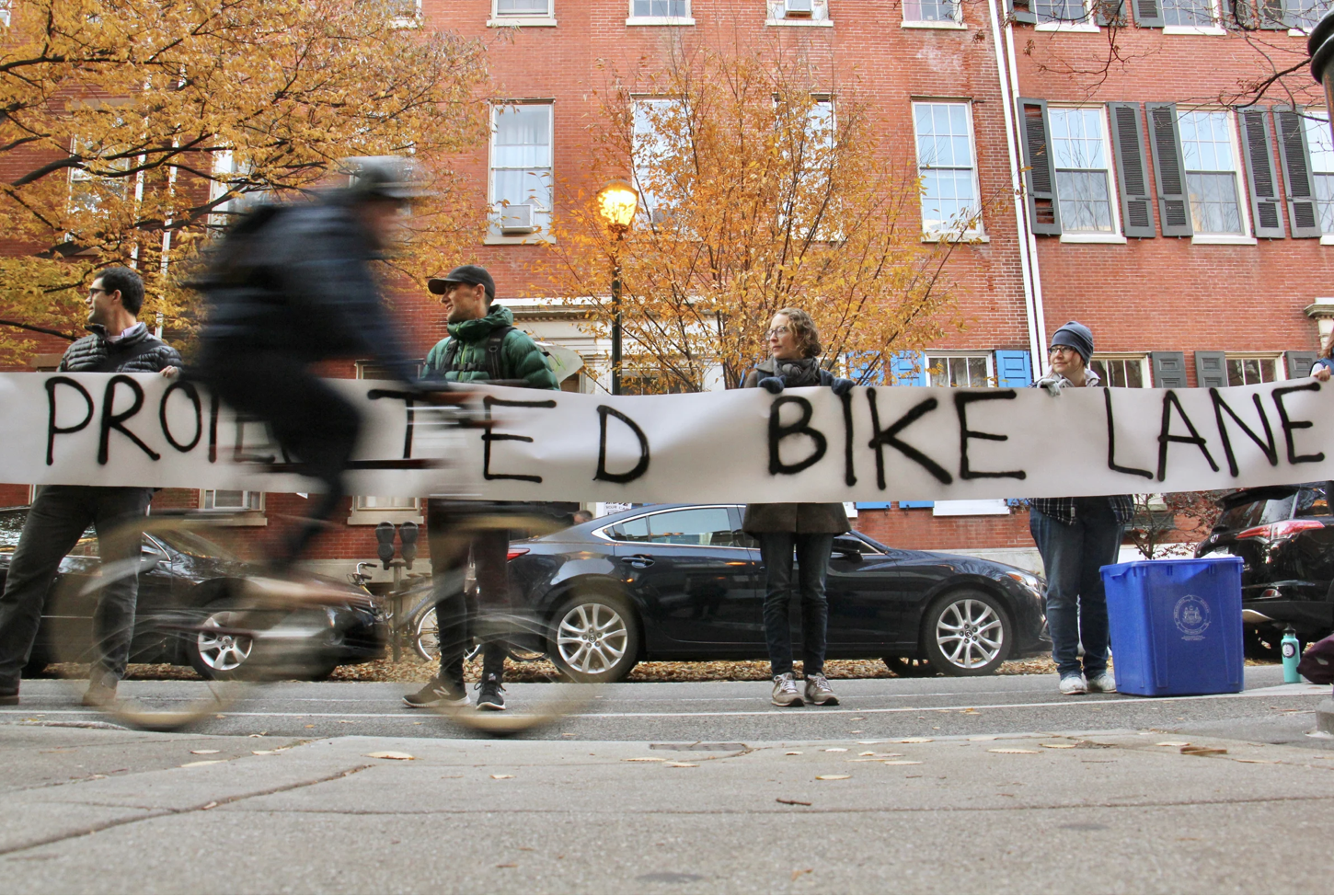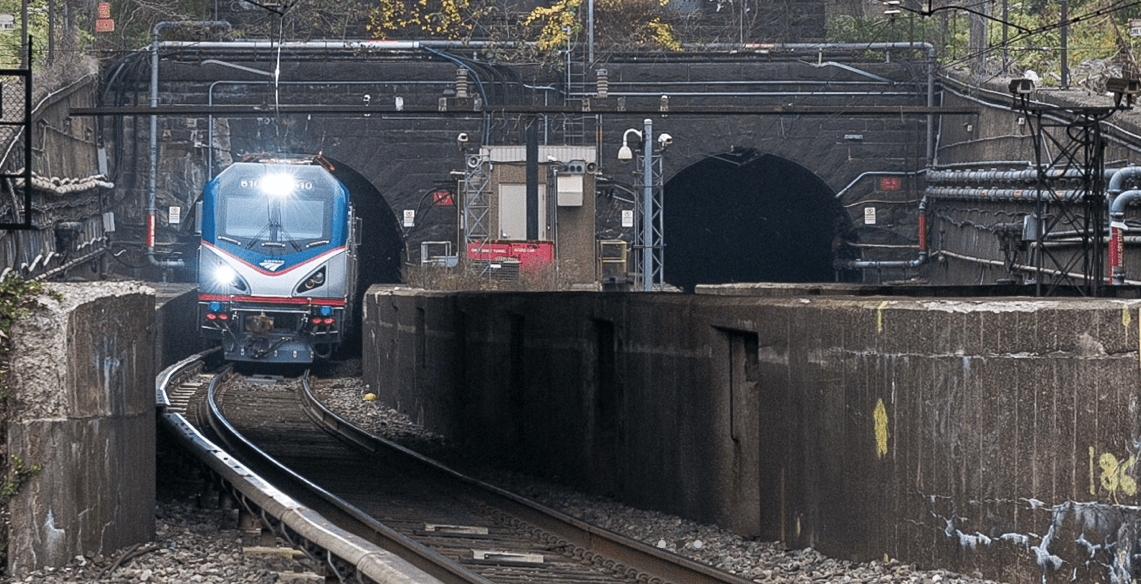America's transportation and infrastructure policies affect literally
everyone who moves from place to place in the country, but often they
are under-discussed and over-simplified by the mainstream media. To
help broaden the debate, Streetsblog Capitol Hill runs a Q&A series called "The Four Questions."
 Mike McKeever (Photo: SACOG)
Mike McKeever (Photo: SACOG)Here's the concept: Every week, a different person weighs in on the same four queries
about the future of the nation's built environment. The questions will
remain the same, in order to provoke a thoughtful exchange of views on
the biggest challenges facing transportation policymakers -- but the
range of participants will be limitless.
Our guest for this week's Four Questions is Mike McKeever, executive director of the Sacramento Area Council of Goverments (SACOG), the metropolitan planning organization for the six-county Sacramento area. During his 20-year planning career, McKeever has spearheaded projects in Portland, San Francisco, Austin, and several other major cities.
Any suggestions for future participants in The Four Questions? Let us know in the comments. Check out previous installments right here.
1. Transportation planning
-- the evaluation and construction of transit, road, and bridge projects
-- is often considered primarily a state and local issue. What specific
type of role should the federal government have in the
mix?
A functional transportation
system throughout the country must continue as an essential federal
priority. While it is common for people to think of the specific
federal role as relating to large projects and networks (e.g., freeway
system, international ports, high speed rail) it is important to also
realize that a good deal of research clearly shows that investments
in smaller projects are also important for the transportation system
to function in the future.
Four examples of investments that are
needed at a big scale, but naturally occur in small increments, come
to mind:
- Complete streets that accommodate
cars, transit, bicyclists and pedestrians are a sensible investment
that not only improve the movement of people, but also help revitalize
communities by making streets more inviting.
- Connectivity to schools, through
investing in the Safe Routes to Schools program, will allow students
to have walking and bicycling to school as an option again -- a win-win,
given the significant percentage of vehicle trips related to schools.
- In our region, we’ve undertaken
a Rural-Urban Connections Strategy that is looking at all aspects of
economic and environmental sustainability in our rural areas, and roads
that serve as farm-to-market trade routes is important for local food
access as well as safety for all users of the roads.
- Over the past few years, we’ve
seen major increases in ridership for local transit operators across
the country. Unfortunately, this has come at a time of declining transportation
funding overall and even more scarce funding for operations specifically.
2. As the gas tax loses some
of its value in an era of more fuel-efficient vehicles, should it be
increased or abandoned in favor of a new system of transportation financing?
Or should both options be in play?
For practical purposes the
gas tax must, at a minimum, be maintained. However, the gas tax
in its current form it does not raise sufficient revenues to adequately
meet our nation's transportation needs. More money will be needed
from all revenue sources -- local, state and federal.
Because
the gas tax has systemic problems (i.e., revenues decline as fuel and
vehicle efficiencies increase), other revenue sources need to be added
to it. The National Infrastructure Bank is a part of the solution.
In many areas, increasing the use of system pricing will be another.
3. The lion's share of federal
transportation funding is sent through state DOTs that then pass aid
on to major cities. Do you think this approach allows urban, suburban,
and rural needs to be fully met?
Regional agencies are increasingly
responsible for planning analysis and decisions that will shape the
future of our metropolitan areas. The planning and funding responsibilities
should be better aligned than they are today. More revenues should
be sub-allocated to the regions. Both the regions and states should
be expected to coordinate with each other for the revenues they govern
to ensure overall system optimization. Through state law, California
sub-allocates much more of the funding to the regions than do the other
states. Regions should also have more flexibility to make the infrastructure
decisions that make sense to them instead of trying to fit federal program
criteria.
4. Transportation contributes
30 percent of America's total CO2 emissions. Do you think a national
cap-and-trade system should proportionally address this problem? If
not, how should it be addressed?
The cap and trade allowances
should allocate enough revenues to the transportation system to effectively
incentivize transportation investments that reduce greenhouse gas emissions. The Clean Energy Jobs and American Power Act (Boxer-Kerry) in the Senate
is an important step in this direction, but additional revenues for
the transportation sector would deliver more of the savings that are
achievable through the transportation sector.
I don't think a
straight pro rata share based on current emissions levels is necessarily
the best approach, as it might send perverse signals to the sectors
that higher emissions will be rewarded with more funding. In California,
our legislature passed Senate Bill 375 last year, which helps to incentivize
coordinated land use and transportation planning. While funding for
infrastructure is hurting at all levels of government, we are using
data to make better decisions about what investments will make the biggest
difference in our communities.





